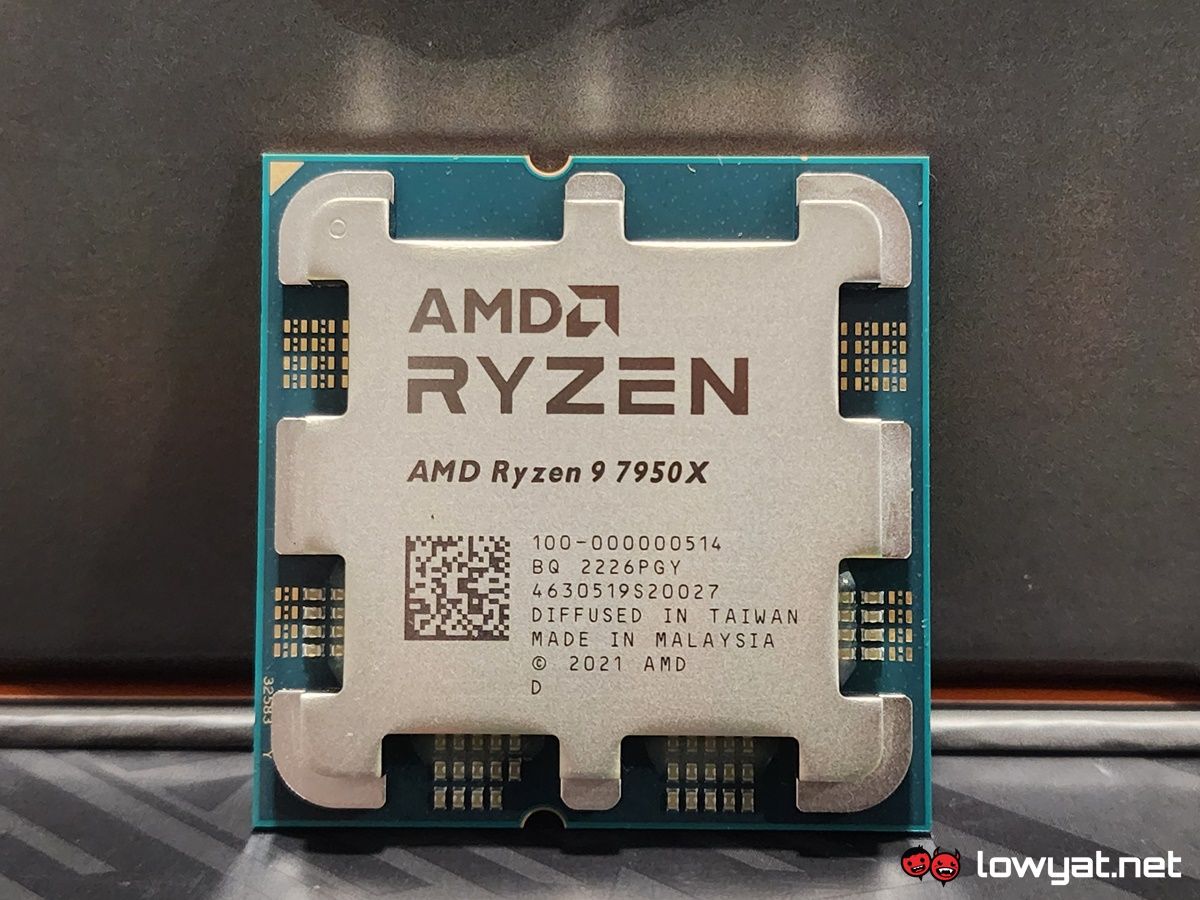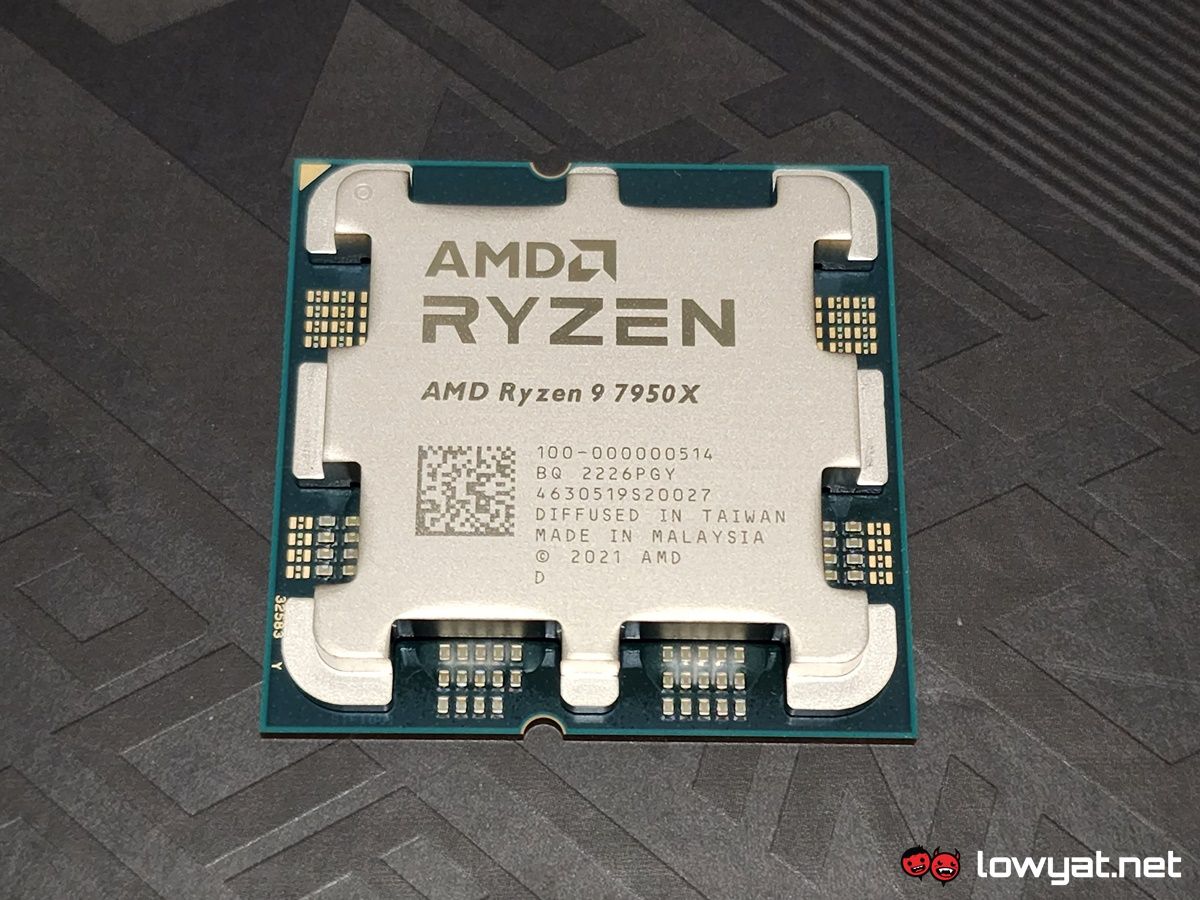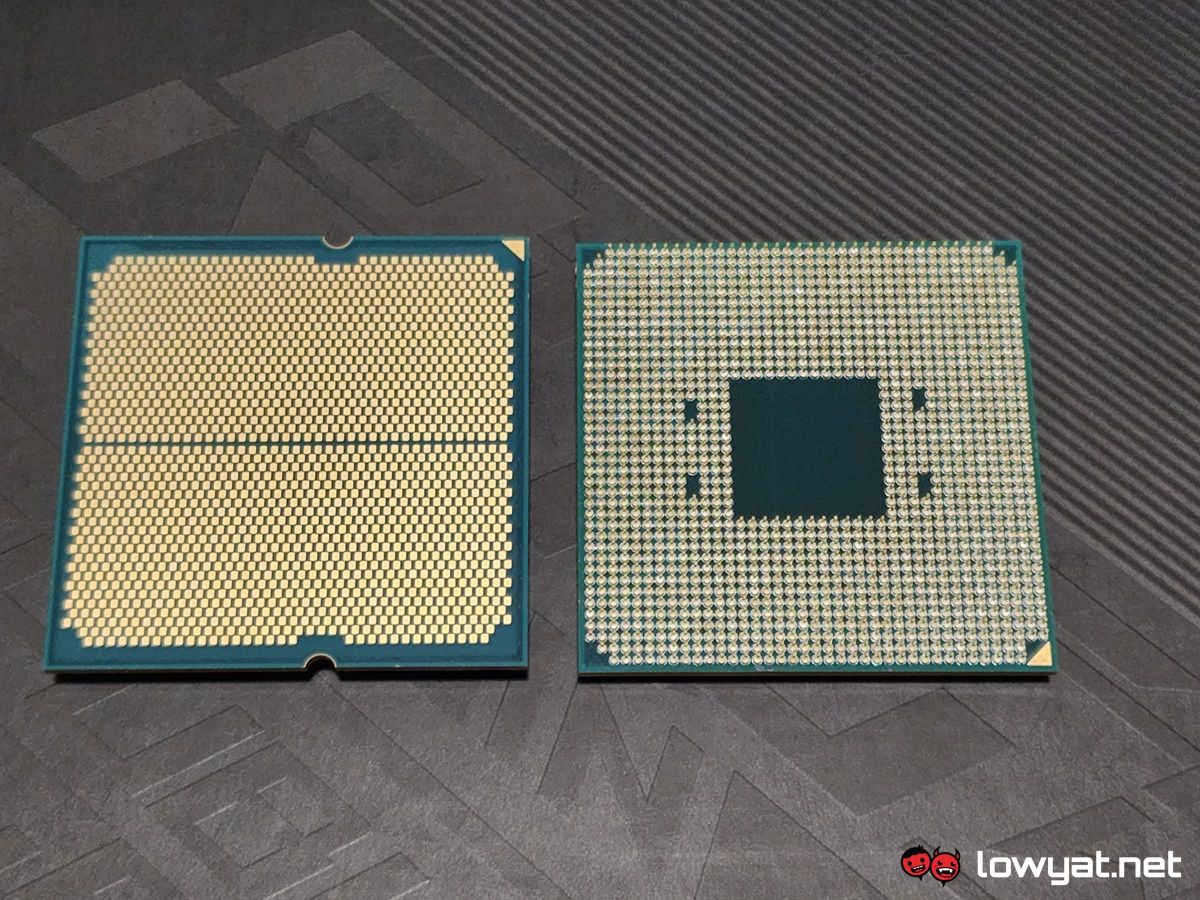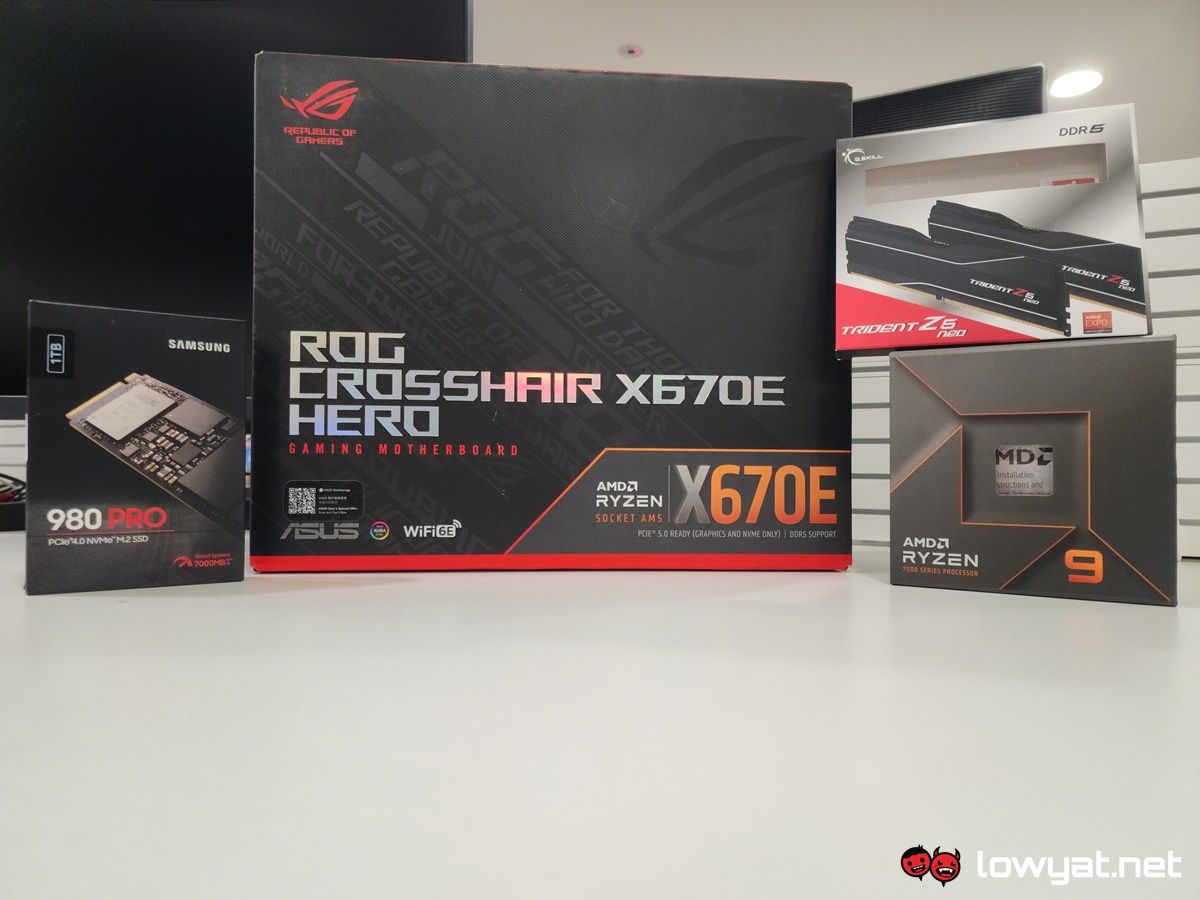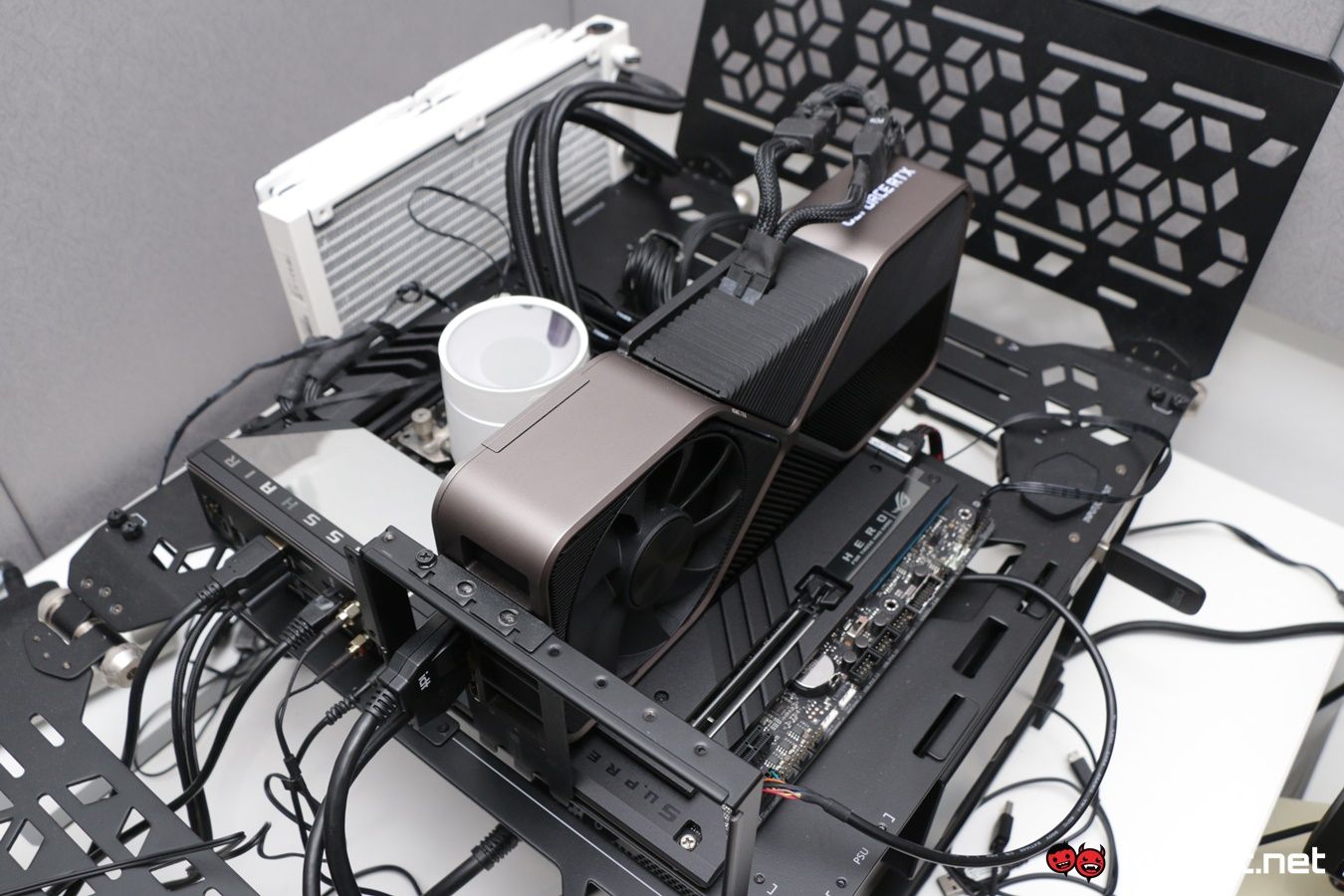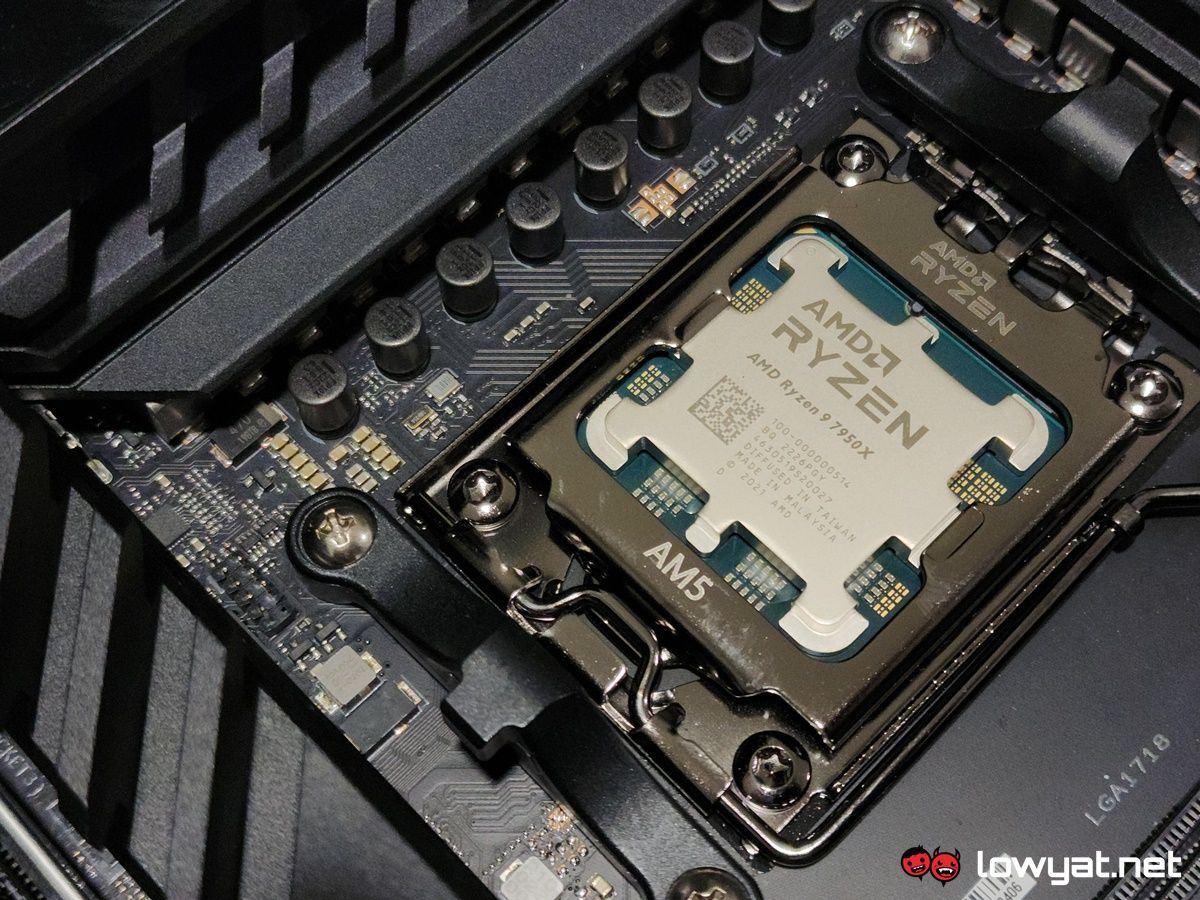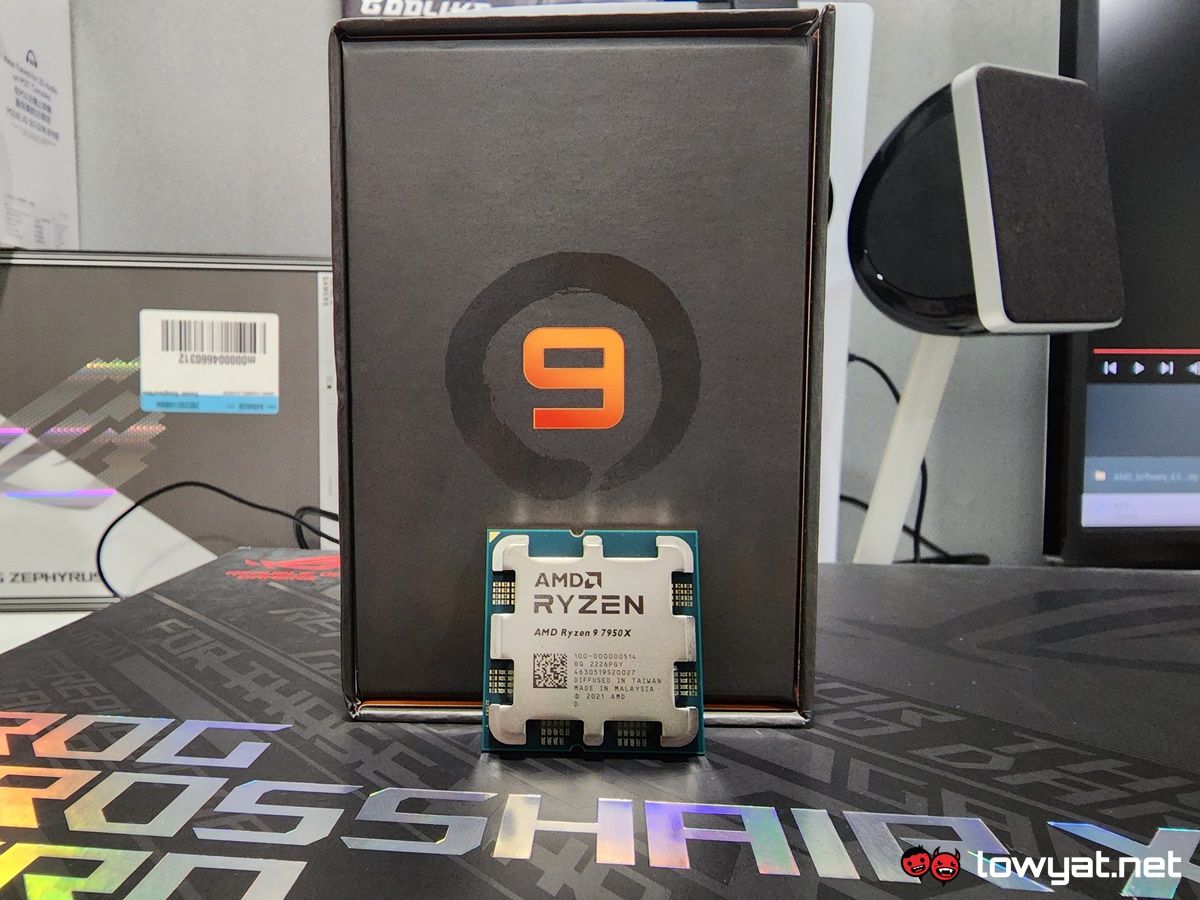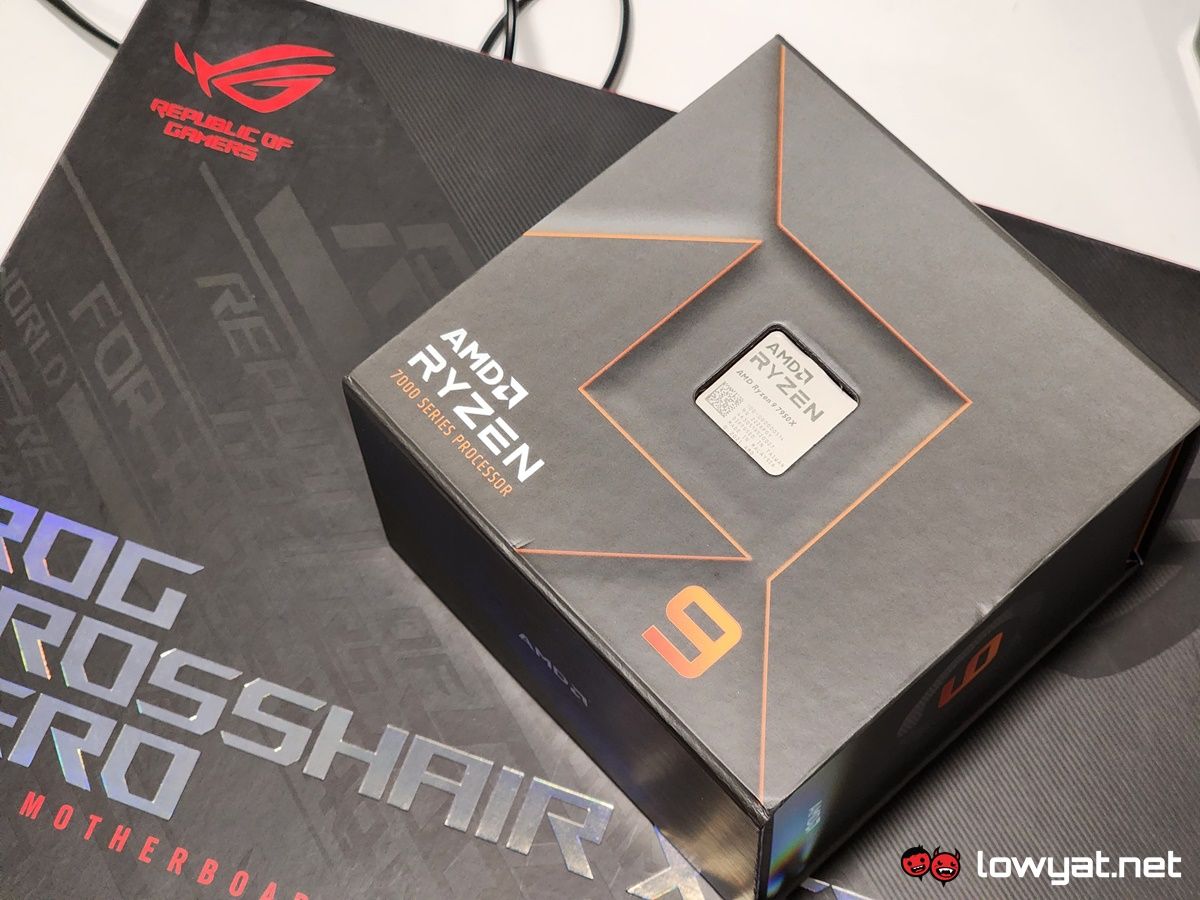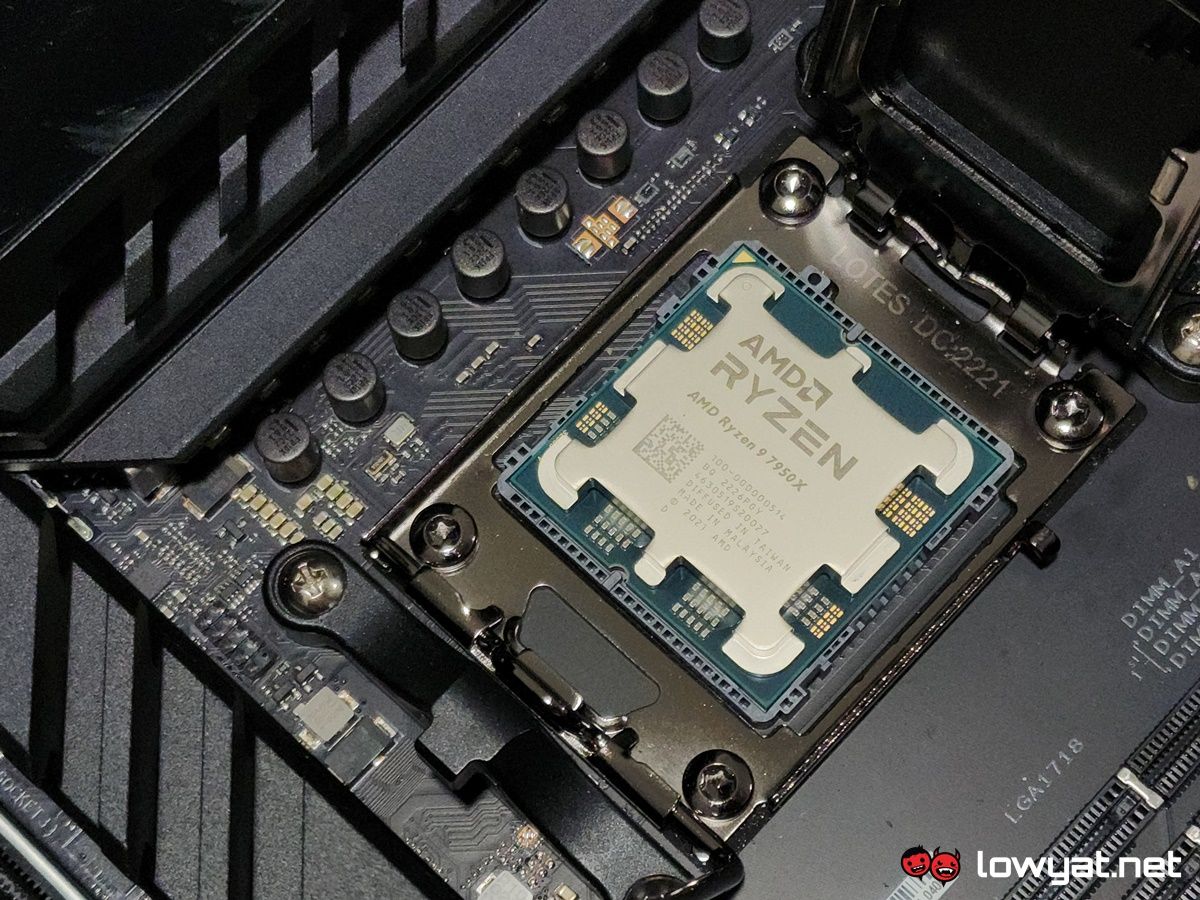Updated (9 October 2022: 8:09PM): Added the local SRP for the Ryzen 9 7950X at the end of the article.
AMD’s Ryzen 9 7950X is, to state the absolutely bleeding obvious point, the creme de la creme of AMD’s latest Ryzen 7000 Series CPU lineup. Like its Ryzen 5000 series predecessor, the 5950X, it’s packing a total of 16 full-fat cores and 32-threads, but make no mistake, this CPU is a completely different animal.
So, without further ado, let’s see what AMD’s new top-tier CPU is all about, and how much of an improvement it is, both over its predecessors and rivals.
Specifications
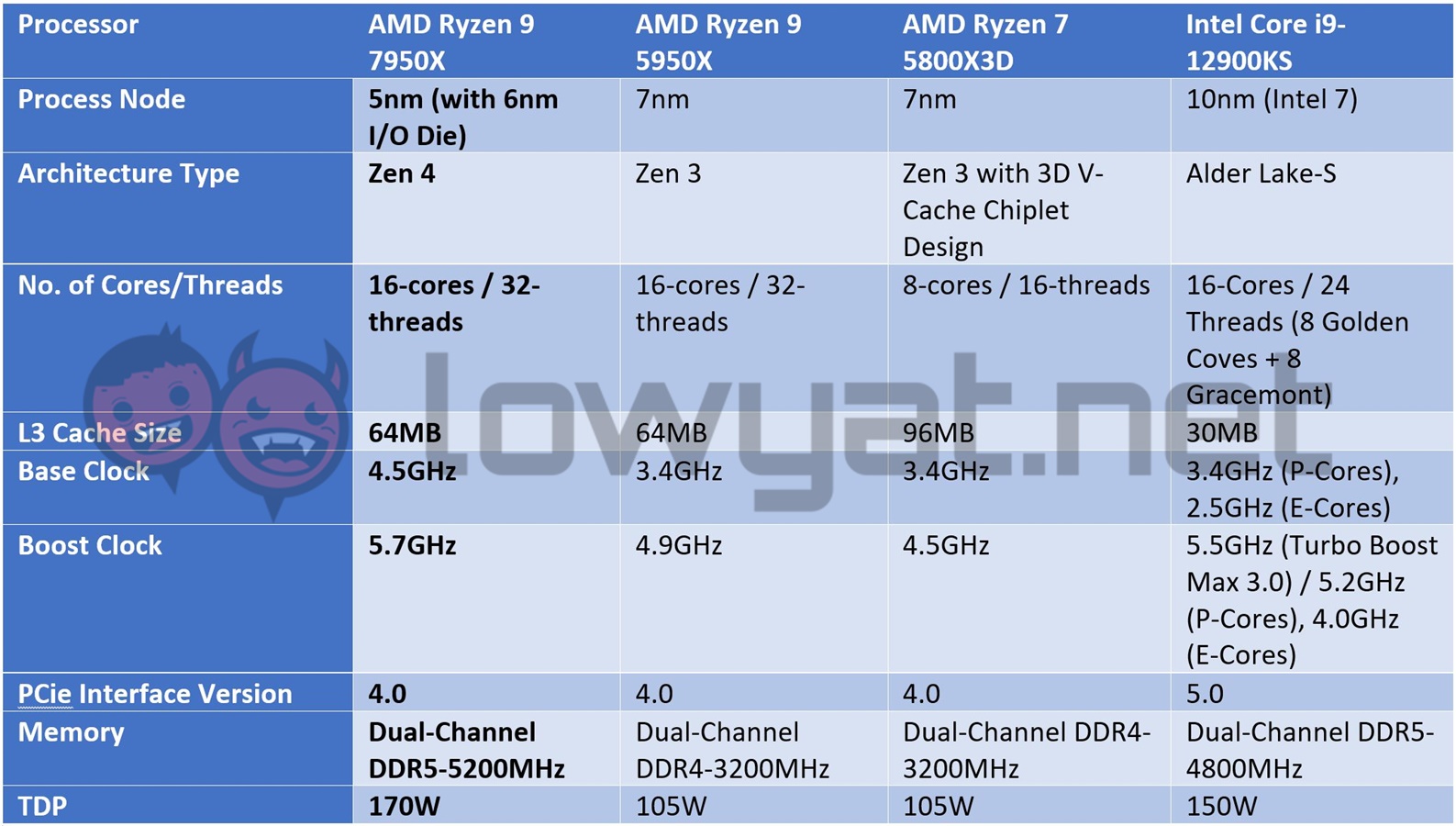 So, let’s go over some of the basics: one of the first things you need to know about the 7950X – and the entire Ryzen 7000 series, for that matter – is that its arrival marks the advent of AMD’s all-new Zen 4 CPU architecture. For that matter, the new die is smaller by a full 2nm, from 7nm to 5nm, with the chipmaker’s long-time partner, TSMC, providing the process node here.
So, let’s go over some of the basics: one of the first things you need to know about the 7950X – and the entire Ryzen 7000 series, for that matter – is that its arrival marks the advent of AMD’s all-new Zen 4 CPU architecture. For that matter, the new die is smaller by a full 2nm, from 7nm to 5nm, with the chipmaker’s long-time partner, TSMC, providing the process node here.
New CPU, new architecture, and higher clocks.
In conjunction with that, the base and boost clocks of the 7950X have also been increased significantly. Specifically, the base clock of this CPU sits at 4.5GHz, while its boost clock is capable hitting an eye-watering 5.7GHz, albeit on a single-core. That’s a massive improvement overall over the 5950X, whose base and boost clocks were set at 3.4GHz and 4.9GHz, respectively.
The second thing you need to know is that unlike previous generation Ryzen CPUs, the 7950X also houses a new 6nm I/O Die that plays host to a limited number of integrated Radeon RDNA2 GPU cores. And to think, all it took was four generations of Ryzen CPUs for it to finally bring the feature onboard the CPU.
The third defining point of the 7950X is the massive overhaul of its physical design. Once more, unlike its predecessors, the CPU and everything else under the Ryzen 7000 Series umbrella, bigs farewell to AMD’s old PGA design and in return, embrace a new LGA socket. To be fair, this isn’t the first time AMD is adopting socket LGA; that honour goes to the first Ryzen Threadripper HEDT series, which launched way back in 2017.
Design
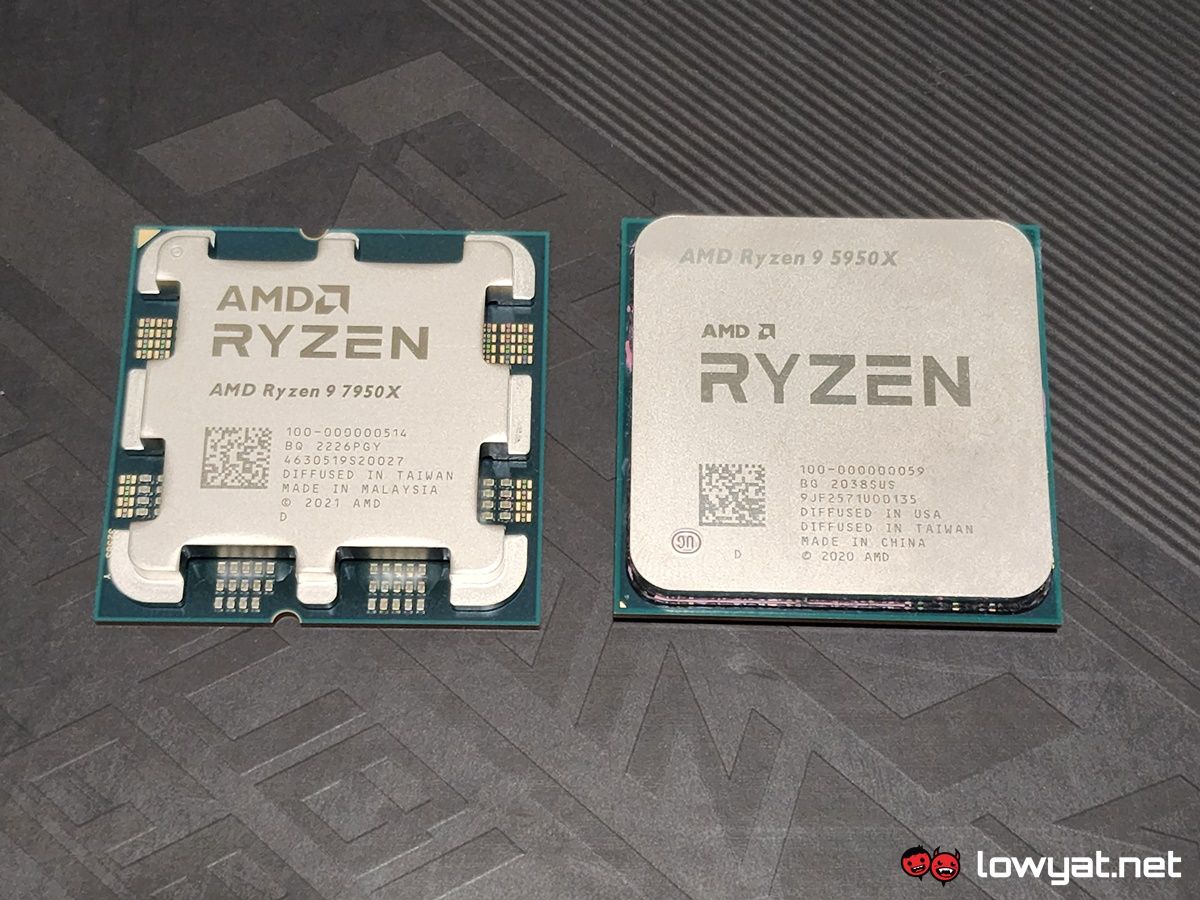
One of, if not the most defining characteristics of the 7950X and its Ryzen 7000 Series siblings, is the CPU lid that sits on top of the Zen4 CPU cores and I/O. I’ll just put it simply: it’s nothing I’ve ever seen used on a CPU and to that end, it certainly isn’t boring to look at.
It is an absolute far cry from the simple, square lid that AM4 used, and more so to the step design Intel uses for its CPUs, be it on Alder Lake or older. That being said, I can also tell you that it isn’t the friendliest cover design to clean thermal paste off from, and it is actually all due to those additional edges, created in part by the unique design of the cover of the 7950X.
Because the 7950X is the top-of-the-line SKU, that also means it and the AM5 chipset gets all the trimmings with the main course. That includes 24 PCIe 5.0 lanes for storage and graphics, support for up to 14 SuperSpeed USB 20Gbps and Type-C connectivity, Wi-Fi 6E, and lastly, support for up to 4 HDMI 2.1 and DisplayPort 2 ports. Oh, and it also runs with DDR5 memory now; just like how Ryzen sparked the change by fully embracing DDR4 in 2017, it’s understandable why the brand is looking forward to the new memory standard here too.
The I/O die with RDNA2 sounds gaming-capable, but really, it isn’t.
That latter support that comes with the 7950X, by the way, is chiefly due to the fact that AMD’s new Zen 4 series finally comes with integrated GPU cores, although we should say that the chipmaker made it clear that these graphics cores aren’t going to be performance-grade and are technically there for diagnostic purposes. So…yeah, don’t expect Steam Deck levels of graphical fidelity with the new I/O die.
Circling back briefly to the choice of the LGA socket, the new format houses 1718 pins on the motherboard, now rather than the usual PGA socket that would otherwise make the CPU more vulnerable to damage.
One last point about the 7950X is the much higher TDP of 170W, with some headroom to hit 230W when the occasion arises. Of course, this increase in power consumption means that the CPU will be able to achieve higher performance metrics.
Testbed
With a brand new CPU architecture and chipset, the hardware that is needed to test the 7950X is clearly not going to be backwards compatible with any old Ryzen system. Here’s a summary of the components, listed down in our usual layout:
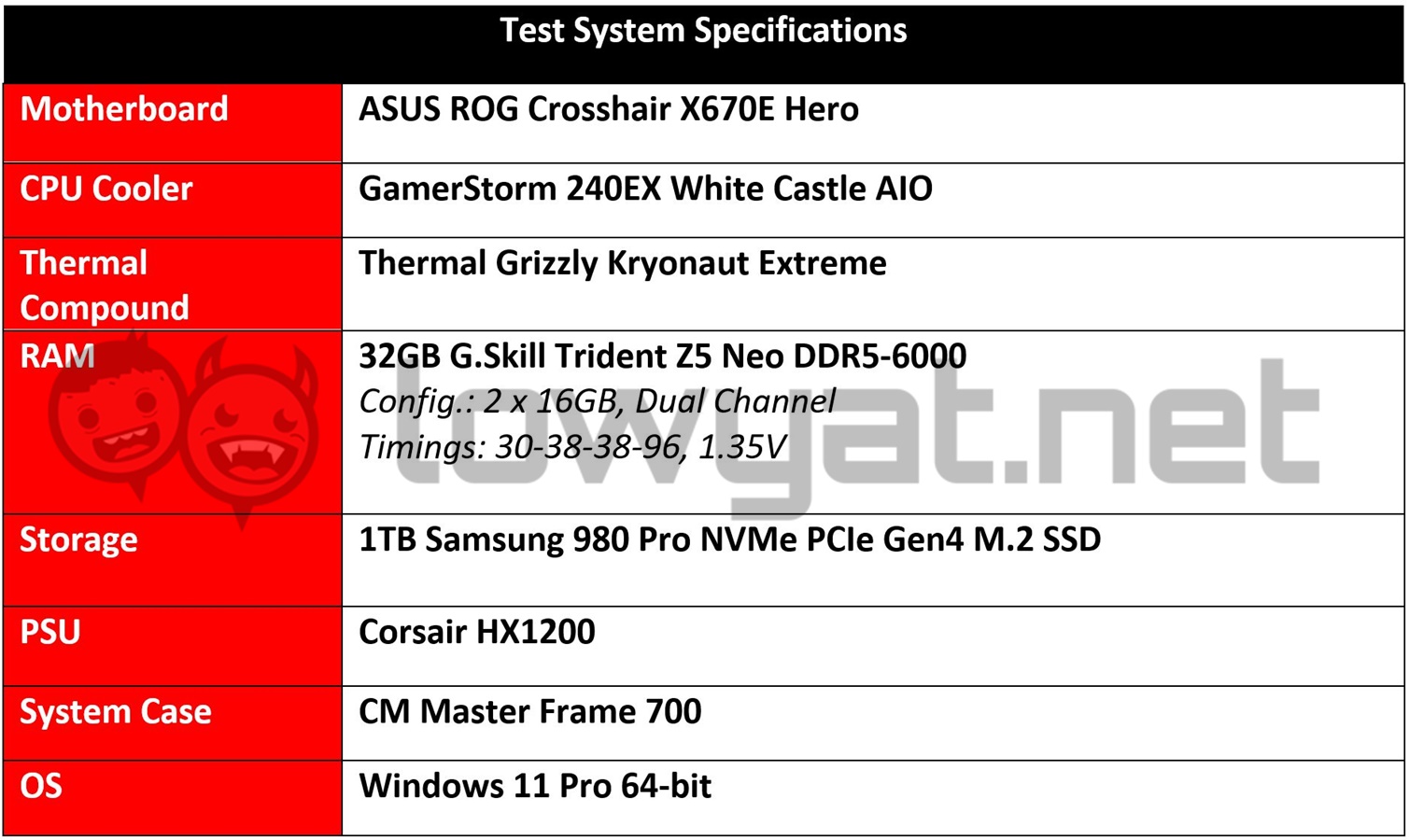 In addition, I’m also using an NVIDIA GeForce RTX 3090 FE to test along with the CPU, as well as a 4K gaming monitor with a variable refresh rate of up to 120Hz. As I have done with all CPU tests prior to this, I won’t be showing the results of the CPU being overclocked and will just be running the 7950X as is.
In addition, I’m also using an NVIDIA GeForce RTX 3090 FE to test along with the CPU, as well as a 4K gaming monitor with a variable refresh rate of up to 120Hz. As I have done with all CPU tests prior to this, I won’t be showing the results of the CPU being overclocked and will just be running the 7950X as is.
I should also mention that, moving forward, the AMD Ryzen 9 7950X will be serving as our defacto testbench to test future components, come what may. Also, and to go a little off-tangent, I’ve also had to replace the old Corsair MP600 SSD with a new Samsung 980 Pro. This is due to the fact that the former storage component, to the point that it just failed to boot, regardless of the system it was installed into.
Lastly, I should mention that the 7950X and its siblings support a mode called Eco Mode, whereby it limits the processor’s power consumption to just 65W. The performance metrics of the CPU in that state aren’t included in the review, but I’ll be adding them here in the future, once I’ve done another round of testing.
Benchmarks
As we can see from the chart, the 7950X often goes head-to-head with Team Blue’s 12900KS and in some cases, overtakes it by a hair’s breadth. I more or less expected to be the case, given that its rival is designed to run two of it’s P-Cores at 5.5GHz, versus one core running at 5.7GHz.
In Cinebench R20 and R23, however, it is clear that the 7950X is the dominant force for multi-core performance, while the 12900KS still takes the lead in the single-core tests. Where the 5th generation Ryzen powerhouse really took me by surprise, though, was just how fast it ran through the Blender benchmark.
Compared to the 5950X, the 7950X is a whole eight minutes faster in the full CPU benchmark, completing the entire process in a little over 20 minutes. Eight minutes, Bezza! Eight!
On another note, the 7950X is just as impressive in Blender’s quick CPU test too, completing the whole process in just a little over five minutes.
As for real-world gaming scenarios, the gains acquired by the AMD Ryzen 9 7950X is noticeable, but not on a scale that I deem as impressive or earth-shattering. Again, you can see the CPU bumping heads with the 12900KS in some games, while clearly overtaking both the 5950X and 5800X3D across the board.
That isn’t to say there aren’t any oddities in the 7950X’s taste, either. Take DOOM Eternal, for example: the game clearly runs well on both 1440p and Full HD resolutions, but it is the higher resolution in which the CPU manages to really push it. There’s also Cyberpunk 2077, where the opposite seems to apply. At 1440p, the game registers an average of 74 fps throughout the game, but in Full HD, the frames understandably jump, even outpacing the average frame count of the 12900KS.
Temperature and Power Consumption
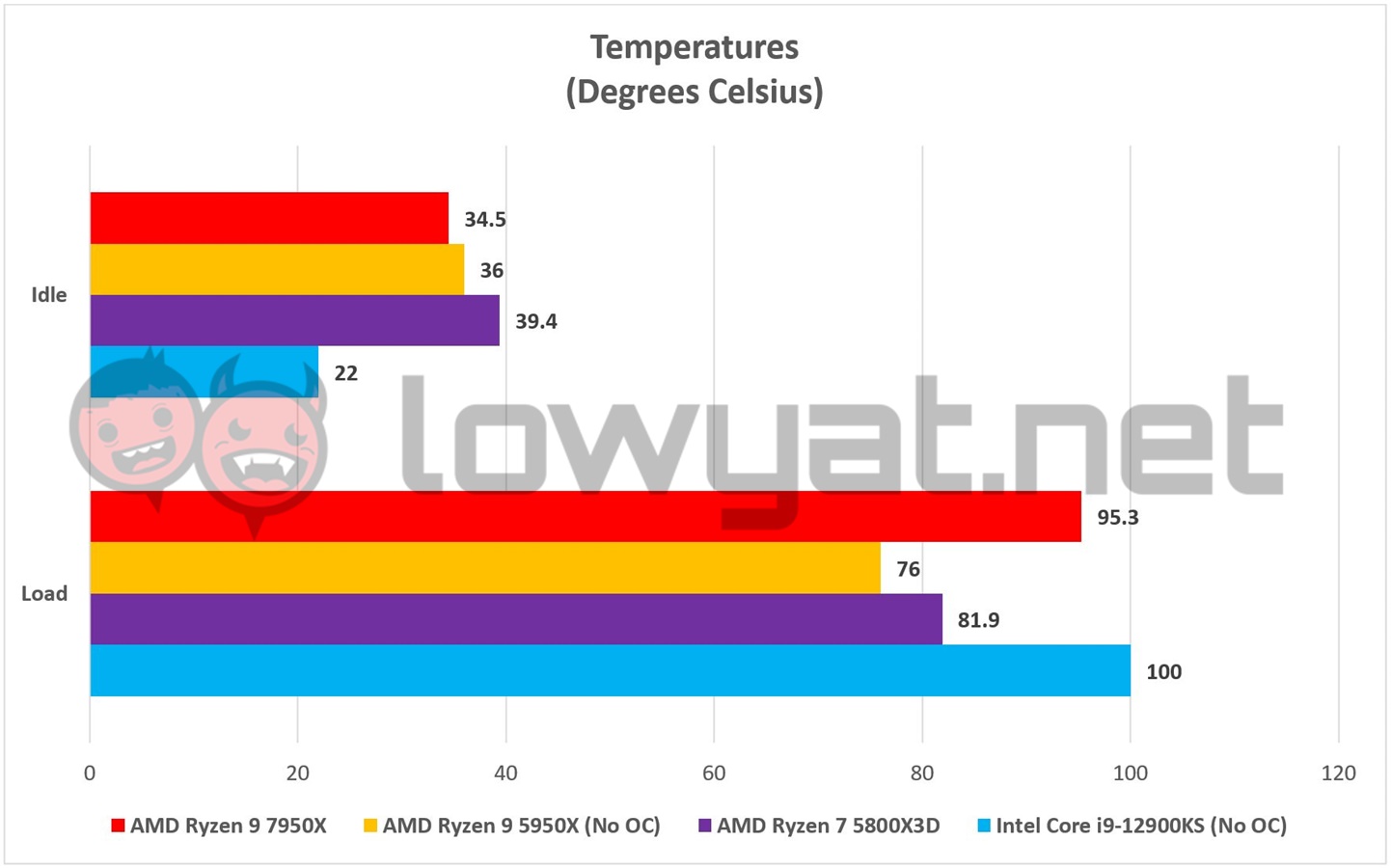 As for the operating temperature of the 7950X, AMD had preempted us that its could hit anywhere within the 94°C range when running at full speed, and it did. AMD says that this was done by design and technically speaking, the temperatures reflected in this review is actually the thermal junction temperature, which is the area around the CPU cores.
As for the operating temperature of the 7950X, AMD had preempted us that its could hit anywhere within the 94°C range when running at full speed, and it did. AMD says that this was done by design and technically speaking, the temperatures reflected in this review is actually the thermal junction temperature, which is the area around the CPU cores.
The actual temperatures of the CPU core actually peaked around 87°C, but never actually went any higher than that.
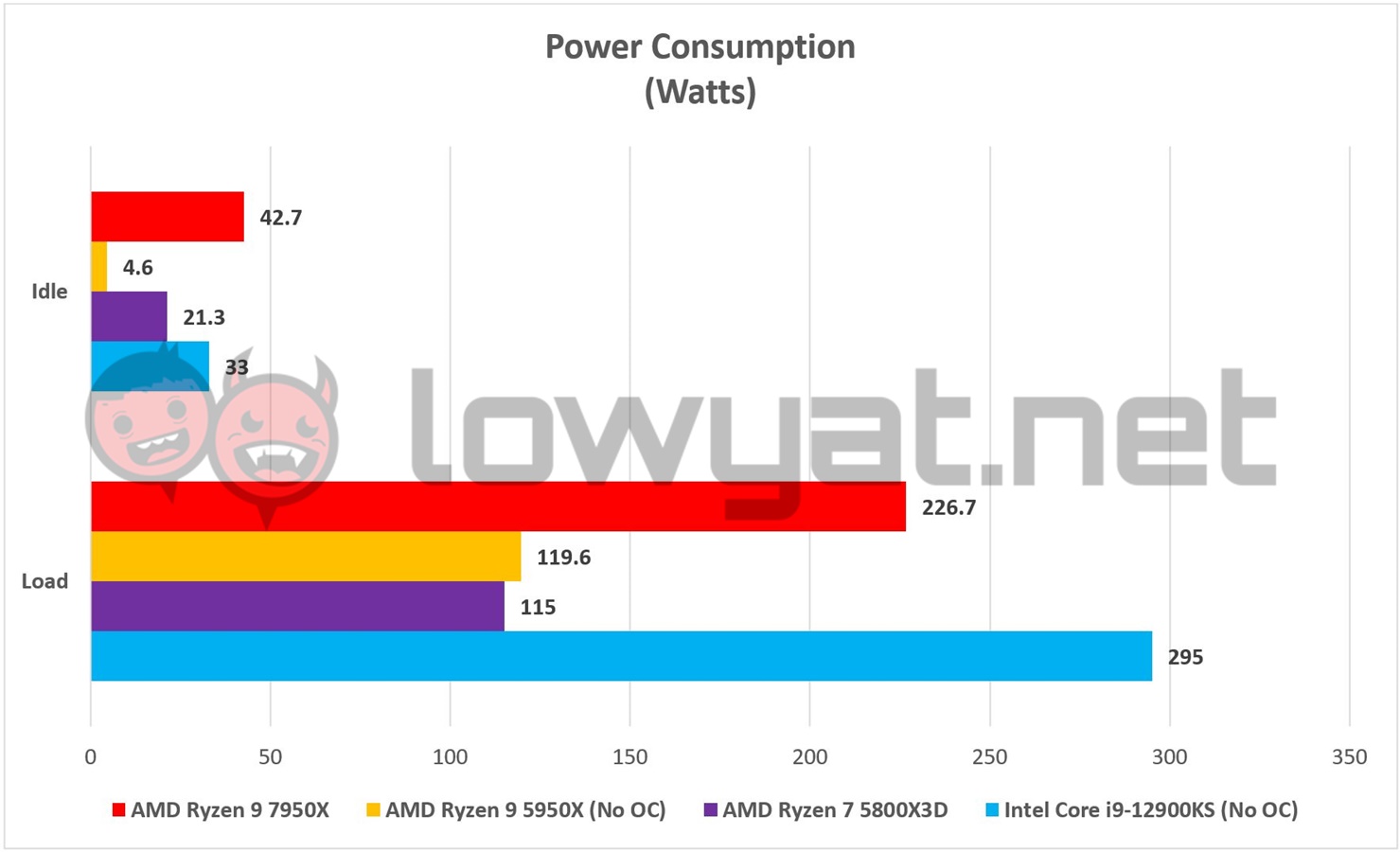 As for power consumption, the 7950X’s performance uplift over past generation Ryzen CPUs is clearly reflected through its designated 170W TDP, or 230W whenever it is running at full whack. Again, this is by the design of AMD’s engineering team. That being said, I think it is only fair to point that it is still pulling less power from the wall than the 12900KS that, by the way, actually has a lower TDP of 150W.
As for power consumption, the 7950X’s performance uplift over past generation Ryzen CPUs is clearly reflected through its designated 170W TDP, or 230W whenever it is running at full whack. Again, this is by the design of AMD’s engineering team. That being said, I think it is only fair to point that it is still pulling less power from the wall than the 12900KS that, by the way, actually has a lower TDP of 150W.
Conclusion
With every generation of AMD’s Ryzen CPU Series, the chipmaker’s goal has been but a simple one: to deliver a new generation of products all sporting a performance uplift over the last one. To that end, the Ryzen 9 7950X does not disappoint.
As the highest tier CPU in its class, the 7950X is beyond a shadow of doubt the new kid on the block, here to give Intel’s Core i9-12900KS a run for it’s money – until Raptor Lake makes it’s grand appearance, that is – while commanding an eye-watering asking price of RM3399. At the time of this publication, we still don’t have local pricing, but I’ll update this review once I get that bit of information.
Photography by John Law.
Follow us on Instagram, Facebook, Twitter or Telegram for more updates and breaking news.


